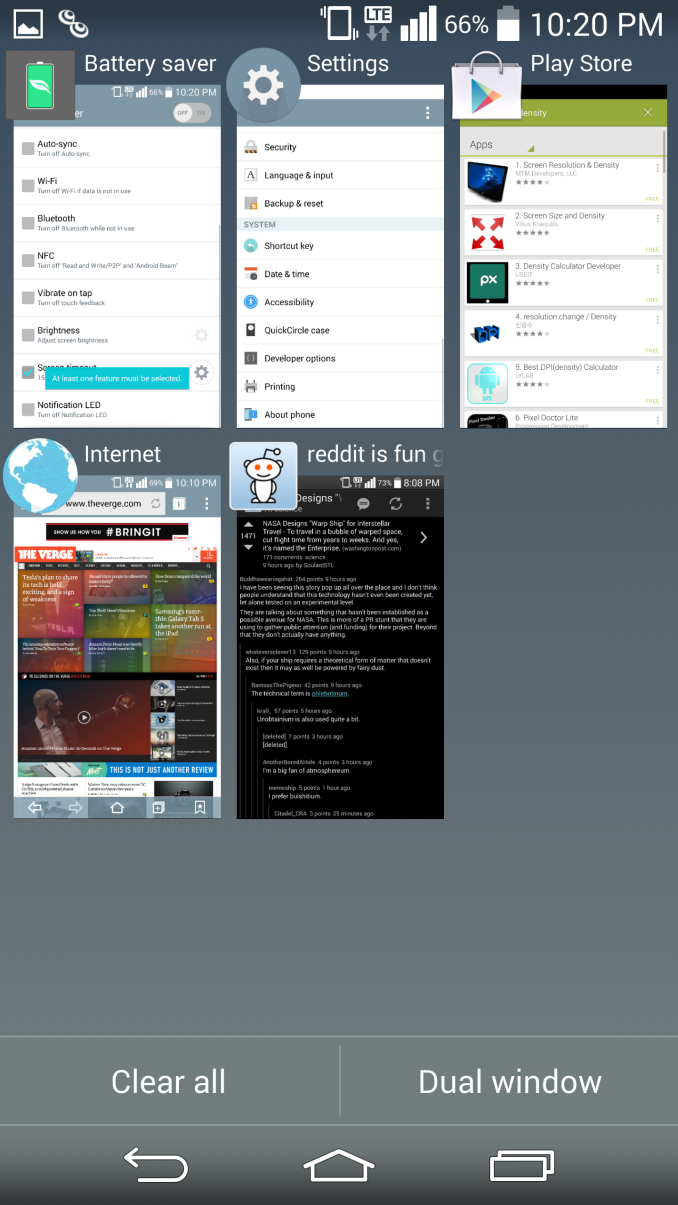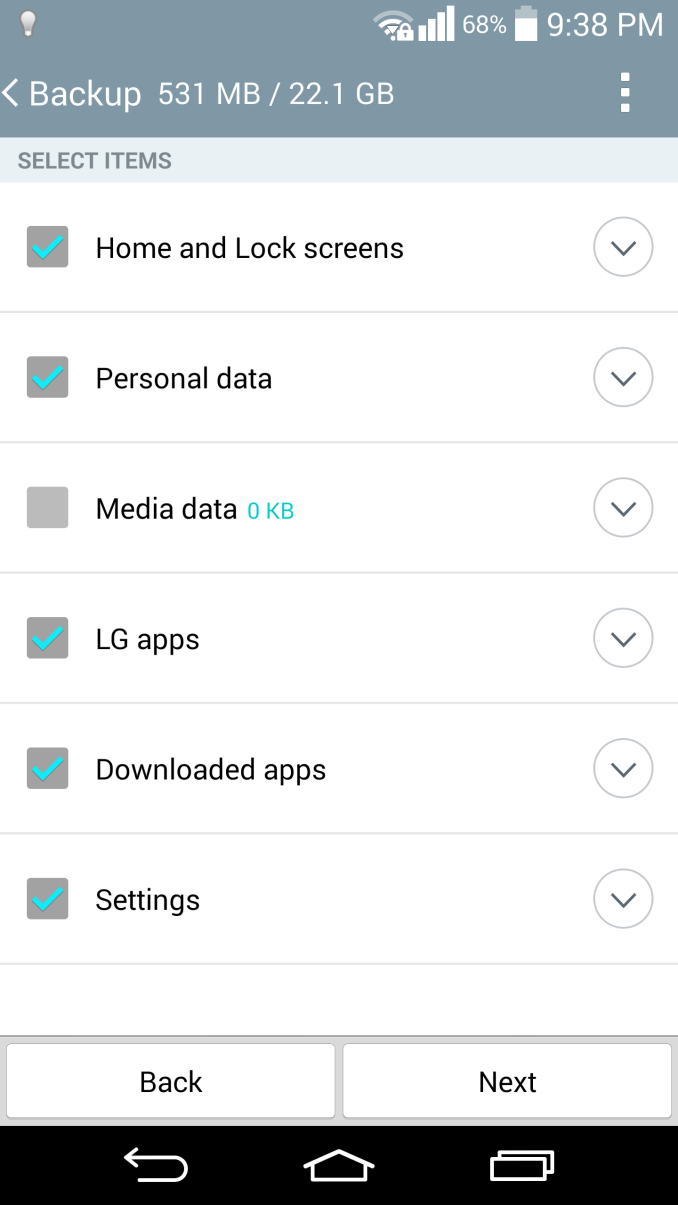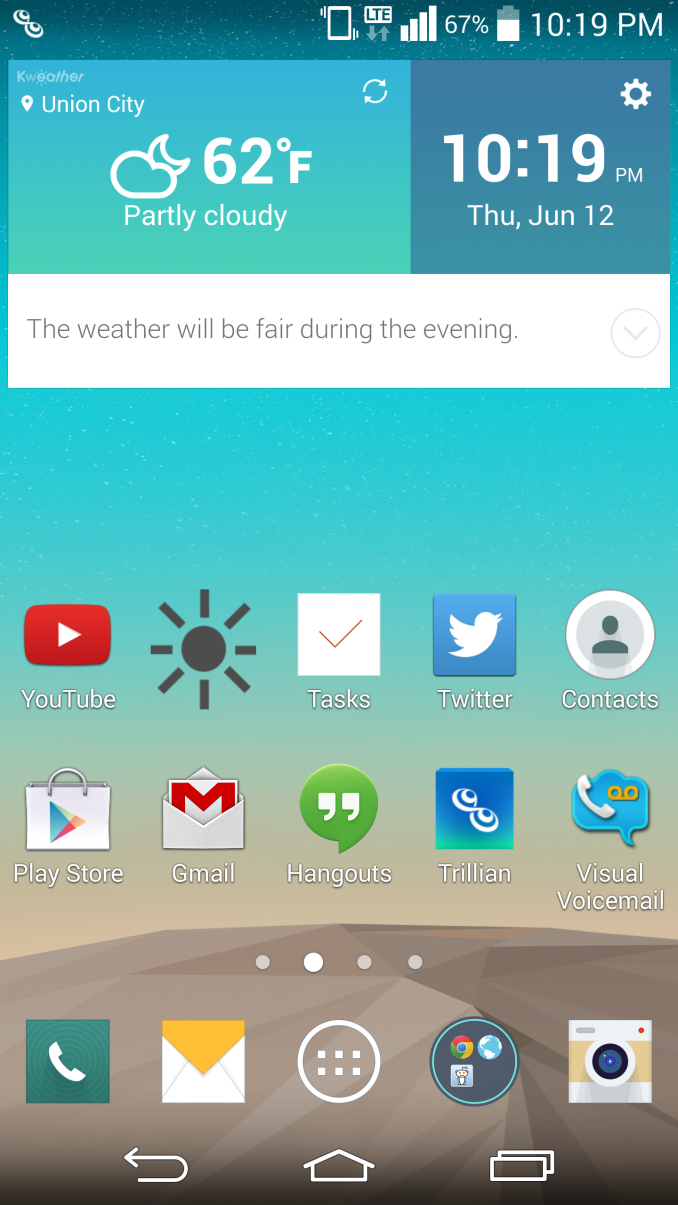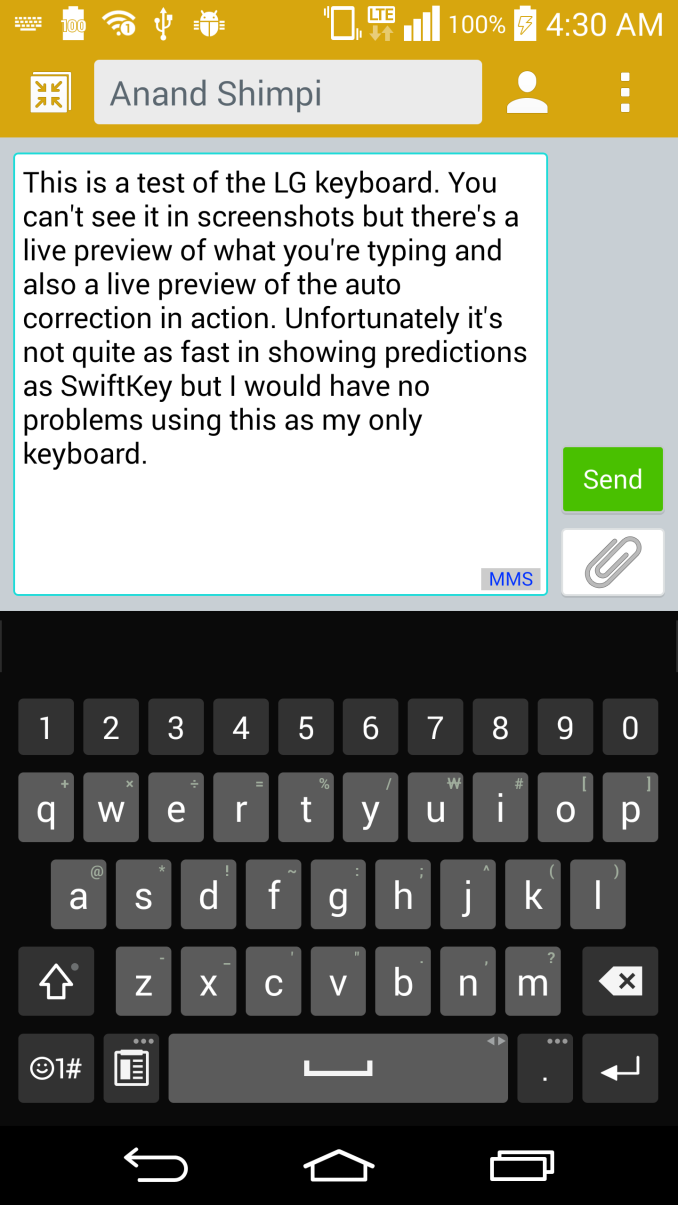The LG G3 Review
by Joshua Ho & Anand Lal Shimpi on July 4, 2014 5:00 AM EST- Posted in
- Smartphones
- LG
- Mobile
- Laptops
- G3
Software
Lately, there’s been a significant trend towards flatter, simpler UIs. While HTC jumped on the trend early with Sense 5 launching on the One (M7), the Korean OEMs have been noticeably slower to move towards this simplification. In this case, Samsung refreshed TouchWiz for the Galaxy S5, and LG has done the same for the G3. While I had very little trouble getting around LG’s UI before this refresh, it definitely struggled in the aesthetic department. LG previously had a strongly skeuomorphic UI, which meant that the UI elements were designed to resemble physical objects. While this may have helped back when computers were a novel invention, it doesn’t make quite as much sense now. Thankfully, LG has gotten far away from this. Overall, there’s very little unnecessary depth to the user interface, and the result is definitely aesthetically pleasing, although opinions may vary. I definitely feel like this interface is very close in aesthetic design to the Galaxy S5’s TouchWiz UI, although the functionality is different. The only real criticism I have here is that the odd shadow effect on icons should go away, although it doesn’t truly affect the overall design.
While opinions on how a UI works (or doesn’t) are mostly subjective, in my experience there have been far fewer friction points in the G3 UI when compared to TouchWiz in general. The best example of this is the multiwindow mode in the G3. While Samsung has done a great job of getting widespread developer adoption for their interface, LG has clearly put more thought into the user experience here. Instead of requiring the user to mentally keep track of whether to use Android’s task switcher or the multiwindow option, the multiwindow toggle is in the task switching menu, which means it’s far more likely that it will be used as needed. The multiwindow functionality also allows for switching immediately to the last two windows used to save time. The only issue I have here is that manipulating open windows isn’t as easy as it should be. This is because closing one of the windows is done by tapping the tab separating the two rather than simply swiping up or down. It does make sense once you learn how it works, but may confuse some at first.
LG isn’t perfect at this though, there are some issues such as the email client. Specifically, email providers like Hotmail/Microsoft don’t work properly if set up as a POP/IMAP account, and rely on the user to know that they have to set up Hotmail as an Exchange account. For the most part though, these issues are rare. LG seems to have done a good job with their applications, with cohesive design throughout that utilizes Google design guidelines. Things like the smart cleaning application in settings, and the LG backup application are all ways that LG has actually improved the user experience. There really aren’t a lot of friction points in the usability of stock applications, other than the ones clearly designed for SKT or are otherwise Korea-only.
Of course, LG’s “gimmicks” also tend to be more useful as well. While I struggled with some unreliability on KnockCode for the G Pro 2, the G3’s version is great in practice. KnockOn and KnockOff both work as expected too. These features are all easy to grasp as well, with very little learning curve. The same isn’t necessarily true for features that ship with the Samsung Galaxy S5, such as the fingerprint sensor. It's not all perfect though, as Smart Notice doesn’t seem to be useful most of the time. Fortunately, it won’t get in your way and it’s integrated well into the clock/weather widget. While both LG UI and TouchWiz have a largely similar experience, I think that LG ends up with a less frustrating one. There are some issues with clutter in the notification bar though, as out of the box there’s almost no room for actual notifications. Althought annoying, it's easily solved by toggling away most of the unnecessary settings.
Overall, I’m happy with LG’s UI. The annoyances are few and far between, and LG has adopted a solid aesthetic design for this generation. While I didn’t notice a significant delta in overall performance compared to the One (M8), I did notice that the G3 had more issues with stutter in animations overall. I suspect that this has relatively little with the UI design itself, as most animations are simple panning movements without 3D effects.
















174 Comments
View All Comments
Rdmkr - Friday, July 4, 2014 - link
The concluding statements gave me a laugh; I agree that everything about this phone is perfect except what distinguishes it from the LG G2. If they just made an incremental update of that model they'd be exactly where they need to be. Which kinda raises the question of why they don't just do that. The way smartphone OEMs rigidly classify and offer their models without them ever changing has never been something I well understood.MonkeyPaw - Friday, July 4, 2014 - link
You need some Lumia phones in your camera tests. The 1020 and the 930 might be a nice start.BPB - Friday, July 4, 2014 - link
Agreed!MonkeyPaw - Friday, July 4, 2014 - link
Can't say I've ever seen a Lumia (or WP device) review on Anandtech, save the 521. As unique as the 1020 was, all we saw was a "hands on" at a press event. A little more coverage would be nice.webby7 - Friday, July 4, 2014 - link
So, are we still pretending your senior smartphone editor has dropped off the face of the planet?The lack of information on this is really poor form.
Anand Lal Shimpi - Friday, July 4, 2014 - link
If there was something I could share I would :)cylemmulo - Friday, July 4, 2014 - link
Any phone that resolution, even like a 7 inch tablet serves no purpose except to trick people into buying the phone and eat battery life. Leave me at 720p and give me my battery life back.cmdrdredd - Saturday, July 5, 2014 - link
720p isn't enough, it's gotta be 1080p because yes, I notice differences when watching 1080p videos.phoenix_rizzen - Friday, July 11, 2014 - link
LG Optimus G has a 4.7", 720p screen, and a 2100 mAh battery, weighing only 145g.LG G2 has a 5.2", 1080p screen, a 3000 mAh battery, weighing slightly less (143g), and is only just barely larger than the OG.
OG: 131.9 x 68.9 x 8.5 mm
G2: 138.5 x 70.9 x 8.9 mm
Yet, battery life on the G2 is phenomenal compared to the OG (or, really, any other phone out there). People routinely get 6+ hours of screen-on time, even with the default LG version of Android. And plenty of people can push that to 10+. Personally, I've only ever topped 7 hours, but it's an almost daily occurence now (Mahdi ROM, based on Android 4.4.4, with ART enabled).
There's more to a solid performing, long lasting phone than just the screen. :)
However, I (personally) don't see a reason to go above ~5 inches and 1080p on a phone. For a tablet (7"+), sure. The 2012 Nexus 7 has a horrible screen resolution for the size, although the SoC really limits the choices in resolution. :)
The LG G2 is just about perfect. If only it had a slide-out keyboard ... :(
dwade123 - Friday, July 4, 2014 - link
Android is so damn ugly. Hire some actual designers.